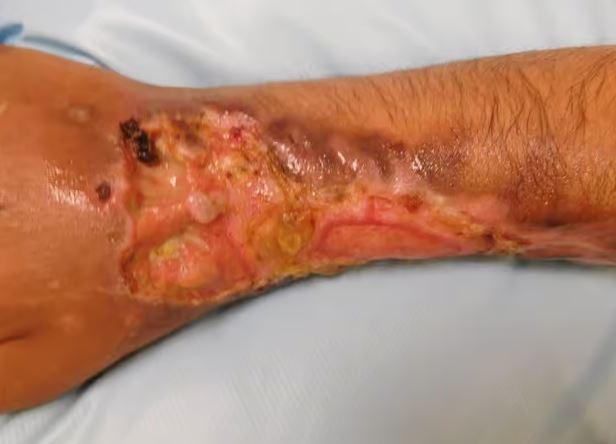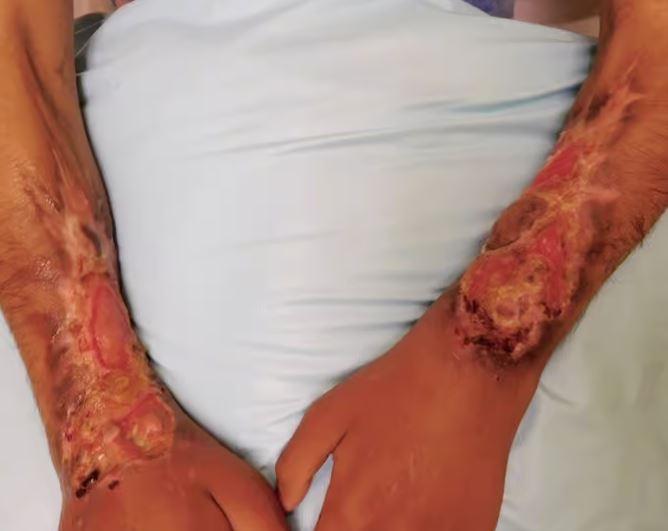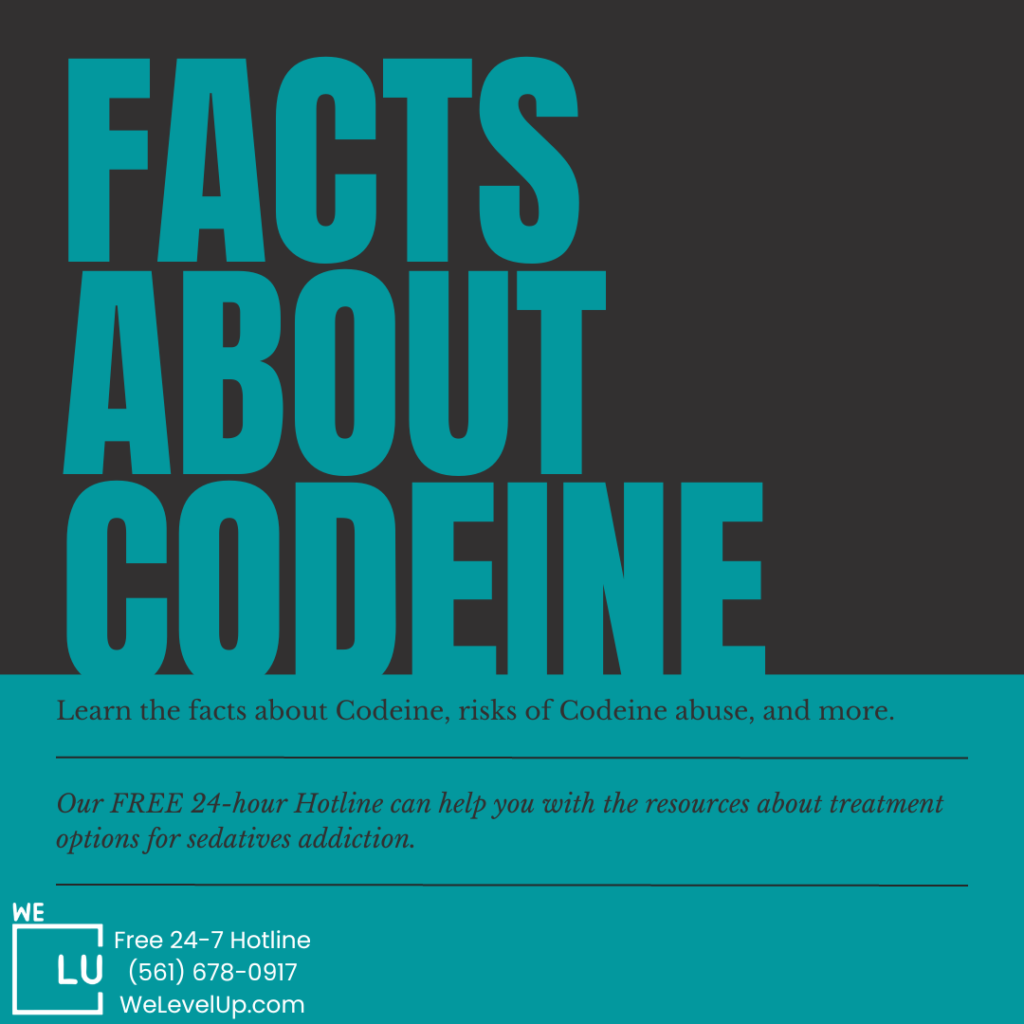What is Krokodil Drug?
“Krokodil” is the street name for the homemade injectable mixture used as an inexpensive substitute for heroin. Its use began in Russia and Ukraine and is now distributed over several other nations. Desomorphine is the semi-synthetic opioid claimed to be the primary ingredient of krokodil and is considered to be responsible for its psychoactive and addictive characteristics.
The starting components for desomorphine synthesis are codeine tablets, alkali solutions, organic solvent, acidified water, iodine, and red phosphorus, all easily available in retail outlets, such as supermarkets, drugstores, etc. The final product is a light brown liquid that is called krokodil.
Individuals who inject krokodil present many severe signs and symptoms, including ulcerations, gangrene, and skin necrosis, quickly evolving to limb amputation and death.
Opioids, including codeine from which krokodil is derived, are potent and potentially hazardous. They carry risks such as addiction, respiratory depression, overdose, and other adverse effects. When mixed with toxic ingredients in the production of krokodil, the dangers, and harm associated with the drug increase significantly.
Symptoms of Krokodil Drug Use
Krokodil is an illicit and hazardous drug. Using krokodil carries severe risks and devastating consequences for a person’s health and well-being. If you suspect someone may be using krokodil or any other illicit substance, it is crucial to encourage them to seek immediate medical help and professional support.
Some of the common symptoms of krokodil drug use include the following:
- Skin Changes: One of the most distinctive signs of krokodil drug use is skin changes around injection sites. The skin may develop a scaly appearance, resembling the texture of a crocodile’s skin. This is due to tissue damage and necrosis caused by the corrosive nature of the drug.
- Open Wounds and Ulcers: Injection sites may develop open wounds, ulcers, or slowly healing sores. These wounds can be painful, infected, and prone to further complications.
- Skin Infections: Due to unsterile injection practices and toxic substances in krokodil, users are at a high risk of developing skin infections. These infections can be severe and may lead to abscesses, cellulitis, and gangrene.
- Poor Wound Healing: Krokodil use can impair the body’s ability to heal wounds properly. Even minor injuries or cuts may take significantly longer to recover or not heal.
- Tissue Necrosis: Krokodil causes severe tissue damage, leading to tissue death (necrosis). This can result in the formation of black or greenish-gray patches on the skin around injection sites.
- Pain and Swelling: Krokodil drug users may experience significant swelling and pain around injection sites and affected areas. This can be a result of tissue damage, infections, or inflammation.
- Physical Health Decline: Long-term use of krokodil can lead to overall physical health deterioration. Users may experience weight loss, malnutrition, dental, respiratory, and other general health problems.
- Psychological Symptoms: Krokodil use can also have psychological effects. Users may exhibit signs of depression, anxiety, mood swings, cognitive impairments, and social withdrawal.

Process of How People Use Krokodil Drug
Krokodil is typically used by injection, where the drug is injected directly into the bloodstream. However, the exact process of how people use krokodil can vary, but generally, it involves the following steps:
- Preparation: The drug is typically prepared by mixing codeine with other substances, such as solvents, acids, and household chemicals. The specific mixture and process can vary, as there is no standardized recipe for producing krokodil.
- Injection: Users inject the drug directly into their veins once it is prepared. Injection sites are typically chosen in areas with accessible veins, such as the arms, legs, or neck.
- Repeated Use: Krokodil use often becomes repetitive and compulsive, as the drug is highly addictive. Users may inject the drug multiple times a day to maintain its effects.
Effects of Krokodil Drug Pictures
Krokodil use has been associated with damage to bones and muscles, causing them to weaken and deteriorate. This can result in chronic pain, difficulty moving, and impaired physical function. Furthermore, prolonged krokodil use can cause significant damage to internal organs. The drug can negatively affect the liver, kidneys, and cardiovascular system, potentially leading to organ failure.

Skip To:
Learn More:
- Zombie Drugs Effects & Dangers, Flakka, Xylazine, and Tranq
- Synthetic Drug Detox Symptoms, Withdrawal, & Treatment
- What is Codeine? Uses, Side Effects & Drug Abuse Information
- Opioid Overdose Symptoms
- Opioid Withdrawal Symptoms & Treatment Options
- Opioid Crisis
- Boofing Meaning. Boofing Drugs & Boofing Alcohol Vs. Butt Chug Lean. How Boofing Alcohol or Boofing Drugs Done & Why?
- Warning Signs of Drug Abuse & Addiction
- Drug Rehab & Detox
The toxic and corrosive nature of the drug, along with the unsanitary conditions associated with its production and administration, leads to devastating consequences for users. The tissue damage, infections, and organ damage caused by krokodil can have irreversible and life-threatening effects.
Desomorphine “Krokodil” Drug Facts
Common or Street Names: Crocodil, Zombie Drug, Krokodil Drug Russia Magic, Poor Man’s Heroin.
Understanding Krokodil Drug Effects
Desomorphine, also known as “krokodil or krokodile drug,” is hazardous and toxic. Understanding its effects is necessary to grasp the severity of its impact on the body. Here are some critical points about krokodil drug side effects:
- Potent Opioid Effect.
- Krokodil is a synthetic opioid several times more potent than morphine.
- Tissue Damage.
- One of the most devastating effects of krokodil use is tissue damage.
- Infections.
- Using unsterile injection practices, combined with the impurities and contaminants in krokodil, increases the risk of severe infections. Skin infections, abscesses, cellulitis, and life-threatening systemic infections can occur.
- Organ Damage.
- Prolonged krokodil use can damage various organs, including the liver, kidneys, heart, and lungs. These organs may experience inflammation, impaired function, and potential failure.
- Neurological Effects.
- Krokodil can harm the nervous system, leading to cognitive impairments, memory loss, and motor dysfunction. Users may also experience depression, anxiety, and other psychological symptoms.
- Addiction and Withdrawal.
- Krokodil is highly addictive, both physically and psychologically. Regular use can lead to dependence, making it challenging to quit without professional help. Withdrawal symptoms may include intense drug cravings, insomnia, muscle and bone pain, nausea, and anxiety.
- General Health Decline.
- Individuals using krokodil may experience a rapid decline in overall health. Nutritional deficiencies, weight loss, dental problems, respiratory issues, and cardiovascular complications are common krokodil drugs side effects among users.
The Dangers of Krokodil Drug Ingredients
The production of krokodil occurs in clandestine settings without quality control measures. This means the final product can vary widely in composition and purity. Users are exposed to various unknown impurities and contaminants, increasing the potential risks and dangers.
Krokodil is typically produced by mixing codeine with household chemicals, solvents (like gasoline or paint thinner), and acids (like hydrochloric acid). These ingredients are corrosive and can cause severe damage to the skin, blood vessels, and organs.
Some of the commonly reported ingredients found in krokodil production include:
- Codeine: A narcotic opioid that serves as the primary base ingredient for krokodil. Codeine is typically obtained by extracting it from over-the-counter medications.
- Solvents: Various solvents, such as gasoline, paint thinner, or industrial cleaning agents, are often added to dissolve and extract the codeine. These toxic solvents can cause significant harm when injected into the body.
- Acids: Acidic substances, such as hydrochloric or phosphoric acid, may convert the codeine into desomorphine. These acids are corrosive and can cause severe tissue damage.
- Reducing Agents: Chemicals that act as reducing agents, such as iodine or red phosphorus, are sometimes added to facilitate the chemical reactions involved in the production process.
The production and use of krokodil are hazardous and illegal. The toxic nature of the drug, along with the severe health consequences it can cause, make it a significant concern for public health and law enforcement agencies. However, the overall impact of krokodil in the US remains relatively limited compared to other illicit drugs.
Desomorphine Drug Fact Sheet by the DEA
Krokodil gained attention primarily in Russia and some parts of Eastern Europe. Krokodil drug in Hindi is mostly homemade. Many also search for the term “krokodil drugs adalah,” as the drug already reached different regions. The Drugs INC Krokodil documentary series also provides information about the drug’s production, use, and impact in certain areas. The series features a few krokodil drug videos and interviews with users, law enforcement officials, medical professionals, and experts in the field to provide insights into the dangers and consequences associated with krokodil use.

Get Your Life Back
Find Hope & Recovery. Get Safe Comfortable Detox, Addiction Rehab & Dual Diagnosis High-Quality Care.
Hotline(844) 597-1011Krokodil Drug Statistics
Opioid drug use, including the misuse and abuse of opioids such as codeine and other illicit drugs containing it, has resulted in significant mortality worldwide. Opioid-related overdoses and complications have contributed to many deaths in recent years.
10
As a powerful morphine derivative, krokodil is ten times more potent than morphine.
Source: NCBI
3
Fatalities among chronic krokodil drug users are expected within 2-3 years of the first dosing, but even the first drug use can be fatal in some cases.
Source: NCBI
45
Users are reported to be able to create krokodil in roughly 45 minutes with codeine and minimal equipment.
Source: NCBI
Top 3 Krokodil Drug FAQs
-
What is the drug krokodil?
Krokodil, or desomorphine, is a synthetic drug that gained notoriety for its highly destructive effects on the human body. It is derived from codeine, a medication commonly used as a pain reliever, through a chemical process that involves mixing it with various toxic and corrosive substances such as gasoline, hydrochloric acid, and household chemicals.
-
What does krokodil drug cause?
Krokodil is highly corrosive due to its production’s impurities and toxic substances. Injecting krokodil into the skin leads to localized tissue damage, causing skin ulcers, open wounds, and necrosis (tissue death). The affected skin can take on a scaly appearance, resembling the skin of a crocodile, which is where the drug gets its name. People still use it because it is a highly addictive drug. Continued use can lead to physical and psychological dependence and challenge stopping the drug. Withdrawal from krokodil can be intense and accompanied by severe cravings, muscle and bone pain, insomnia, anxiety, and depression.
-
What is krokodil drug mixed with?
Krokodil is typically dissolved in gasoline, paint thinner, or lighter fluid solvents. These solvents help extract the opioid properties from codeine and facilitate the chemical reaction required to produce desomorphine. Hydrochloric acid or other strong acids are used to convert codeine into desomorphine. These acids can be corrosive and highly dangerous if mishandled. Furthermore, various household chemicals may be added to the mixture, including red phosphorus (often sourced from matchbox strike pads), iodine, and household cleaning agents. These chemicals serve as catalysts or reactants in the chemical process.
Get Help. Get Better. Get Your Life Back.
Searching for Accredited Drug and Alcohol Rehab Centers Near You?
Even if you have failed previously and relapsed, or are in the middle of a difficult crisis, we stand ready to support you. Our trusted behavioral health specialists will not give up on you. When you feel ready or just want someone to speak to about therapy alternatives to change your life call us. Even if we cannot assist you, we will lead you to wherever you can get support. There is no obligation. Call our hotline today.
(844) 597-1011Krokodil Drug Threats in the US
Krokodil (desomorphine) has not emerged as a significant drug threat in the United States compared to other illicit drugs such as opioids, methamphetamine, or cocaine. While there have been sporadic reports and isolated incidents of krokodil use in the US, its prevalence and impact remain relatively limited.
However, the production and use of krokodil pose significant dangers and health risks. The toxic nature of the drug and the potential for severe tissue damage, infections, and long-term health consequences make it a serious concern for public health and law enforcement agencies.
Law enforcement agencies and healthcare professionals in the US remain vigilant and continue to monitor emerging drug threats, including the potential spread of krokodil. Efforts are focused on preventing this dangerous drug’s production, distribution, and use and raising awareness among communities, healthcare providers, and law enforcement about its risks.
Suppose you have specific concerns or information regarding the presence or use of krokodil in your area. In that case, we recommend contacting local law enforcement authorities or healthcare professionals for the most accurate and up-to-date information and guidance.
First-class Facilities & Amenities
World-class High-Quality Addiction & Mental Health Rehabilitation Treatment
Rehab Centers TourRenowned Addiction Centers. Serene Private Facilities. Inpatient rehab programs vary.
Addiction Helpline(844) 597-1011Proven recovery success experience, backed by a Team w/ History of:
15+
Years of Unified Experience
100s
5-Star Reviews Across Our Centers
10K
Recovery Success Stories Across Our Network
- Low Patient to Therapist Ratio
- Onsite Medical Detox Center
- Comprehensive Dual-Diagnosis Treatment
- Complimentary Family & Alumni Programs
- Coaching, Recovery & Personal Development Events
Krokodil Drug Abuse Treatment
Treating krokodil drug abuse is a complex process involving multiple components to address addiction’s physical, psychological, and social aspects. Due to the severe health consequences linked with krokodil use, immediate medical attention is crucial.
Here are some critical components of krokodil drug abuse treatment:
- Medical Stabilization.
- This involves providing emergency medical care to address the immediate health risks and complications associated with krokodil use, such as wound care, infection management, and detoxification from the drug.
- Detoxification.
- Detoxification helps individuals safely withdraw from krokodil and manage their physical withdrawal symptoms. Medical supervision is necessary to ensure the process is as safe and comfortable as possible.
- Comprehensive Assessment.
- A thorough assessment by healthcare professionals helps identify any co-occurring mental health disorders, medical conditions, or social issues that may need to be acknowledged during treatment.
- Psychotherapy.
- Individual and group therapy sessions play a crucial role in addressing the psychological aspects of addiction. Therapists help individuals understand the underlying causes of their addiction, develop coping strategies, and make positive behavioral changes.
- Medication-Assisted Treatment (MAT).
- Depending on the individual’s needs, certain medications may be used to support recovery, such as medications for opioid use disorder or to manage co-occurring mental health conditions.
- Relapse Prevention.
- Learning and practicing relapse prevention strategies is essential to treatment. This includes identifying triggers, developing healthy coping mechanisms, and establishing a support network.
- Supportive Services.
- Additional support services may include vocational training, educational programs, family therapy, and assistance with housing and employment to help individuals rebuild their lives and prevent relapse.
It is crucial for individuals struggling with krokodil addiction to seek professional help from healthcare providers, addiction specialists, or substance abuse treatment centers. These professionals can provide personalized treatment plans tailored to the individual’s needs, ensuring the best chance for recovery and long-term sobriety.
World-class, Accredited, 5-Star Reviewed, Effective Addiction & Mental Health Programs. Complete Behavioral Health Inpatient Rehab, Detox plus Co-occuring Disorders Therapy.
CALL(844) 597-1011End the Addiction Pain. End the Emotional Rollercoaster. Get Your Life Back. Start Drug, Alcohol & Dual Diagnosis Mental Health Treatment Now. Get Free No-obligation Guidance by Substance Abuse Specialists Who Understand Addiction & Mental Health Recovery & Know How to Help.
I Turned My Life Around from Drug & Alcohol Addiction, Loneliness, Despair & Anxiety to a Full Recovery
Seeking professional treatment is crucial for overcoming krokodil drug addiction. Inpatient or residential rehabilitation programs for substance abuse can provide comprehensive care and support. These programs often include individual and group therapy, counseling, behavioral interventions, and medical support.
Get FREE addiction treatment and mental health rehab insurance check – https://welevelup.com/rehab-insurance/
If you or a loved one is struggling with krokodil addiction or other substance use disorder(s), call for a FREE consultation 24/7 at (561) 678-0917
Treatment is within your reach. Decide today to reclaim your life from drug use disorders.
Sean’s Addiction Recovery Testimonial Video Transcript.
“Hi, my name is Sean. I have been clean since September 26, 2014.
I remember and reflect on loneliness, despair, and constant anxiety-ridden behavior.
I was left to my own devices, looking to the left and right.
And not having anybody to call or talk to.
I know it’s cliche, and I know a lot of people say it. I would have sold myself extremely short of my life today.
If I had tied myself to the material items, I wouldn’t have realized the life I wanted.
And I’m forever grateful for the guidance I received.”
Experience Transformative Recovery at We Level Up Treatment Centers.
See our authentic success stories. Get inspired. Get the help you deserve.
Start a New Life
Begin with a free call to an addiction & behavioral health treatment advisor. Learn more about our dual-diagnosis programs. The We Level Up Treatment Center Network delivers recovery programs that vary by each treatment facility. Call to learn more.
- Personalized Care
- Caring Accountable Staff
- World-class Amenities
- Licensed & Accredited
- Renowned w/ 100s 5-Star Reviews
We’ll Call You
Search We Level Up Krokodil Drug Detox, Mental Health Topics & Resources
Sources
[1] Gahr M, Freudenmann RW, Hiemke C, Gunst IM, Connemann BJ, Schönfeldt-Lecuona C. Desomorphine goes “crocodile”. J Addict Dis. 2012;31(4):407-12. DOI: 10.1080/10550887.2012.735570. Erratum in: J Addict Dis. 2013;32(1):118. PMID: 23244560.
[2] DESOMORPHINE (Dihydrodesoxymorphine; dihydrodesoxymorphine-D; Street Name: Krokodil) – Drug Enforcement Administration (DEA)
[3] van Kempen EEJ, Brand HS. Effects of krokodil (desomorphine) use on oral health – a systematic review. Br Dent J. 2019 Nov;227(9):806-812. DOI: 10.1038/s41415-019-0854-x. PMID: 31705099.
[4] Metabolism and Analysis of Desomorphine – Office of Justice Programs (OJP)
[5] Ghazawi FM, Beecker J. Necrotic leg ulcers associated with krokodil injection in a 41-year-old man. CMAJ. 2019 Jun 24;191(25):E712. DOI: 10.1503/cmaj.190027. PMID: 31235492; PMCID: PMC6592803.
[6] Addiction – Healthy People 2030 – Office of Disease Prevention and Health Promotion (.gov)
[7] Recovery Is for Everyone: Understanding Treatment of Substance Use Disorders – Centers for Diseases Control and Prevention (CDC)
[8] Substance Abuse under the ADA – U.S. Commission on Civil Rights (USCCR)
[9] Diaper AM, Law FD, Melichar JK. Pharmacological strategies for detoxification. Br J Clin Pharmacol. 2014 Feb;77(2):302-14. DOI: 10.1111/bcp.12245. PMID: 24118014; PMCID: PMC4014033.
[10] Detoxification and Substance Abuse Treatment [Internet]. Rockville (MD): Substance Abuse and Mental Health Services Administration (US); 2006. (Treatment Improvement Protocol (TIP) Series, No. 45.) Available from: https://www.ncbi.nlm.nih.gov/books/NBK64115/




